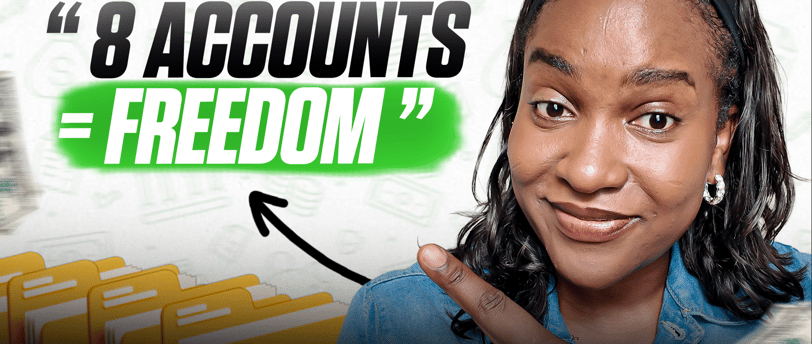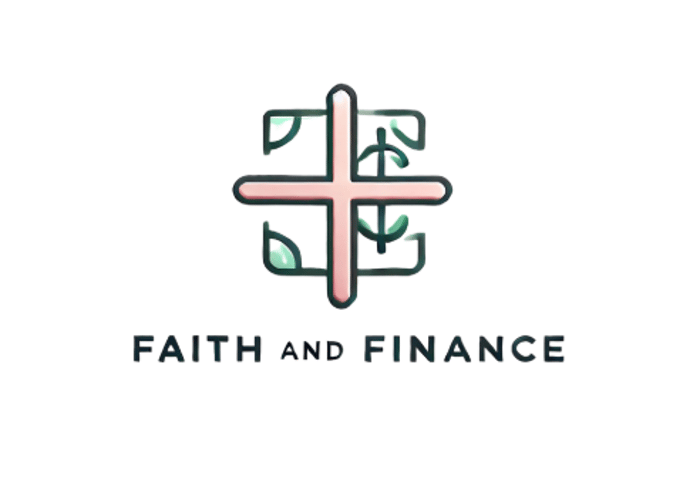coming soon...the steward sheet : Your complete system to budget, save, invest, and eliminate debt — all in one simple, ultimate money manager for financial independence sign up below
The 8 Accounts You Need for Financial Freedom!
It’s time to get down to the nitty-gritty. Where should you put your money? It can get really confusing, which is why I’ve simplified things for you down to just these 8 accounts! Open them in this exact order!
Liliane Meteumba
6/23/20256 min read


1.Checking Account
2.High-Yield Savings Account (HYSA)
3.401k (Traditional or Roth)
4.SEP IRA or Solo 401k
5.IRA (Traditional or Roth)
6.Health Savings Account (HSA)
7.Taxable Brokerage Account
8. Donor Advised Fund (DAF)
Where do I put my money for financial freedom? It’s one of the most confusing questions in personal finance and after 5+ years of trials and error, I’ve discovered the best brokerages and banks to safeguard your hard-earned money. But don’t worry — I’ve broken it down into just 8 simple accounts. Account number 8 is not common so watch till the end to know about it.
Account #1. Checking Account
A checking account is the foundation of your daily financial life. It serves as the central hub where your income is deposited and your everyday expenses are managed. From rent and utility bills to groceries and Netflix subscriptions, this account allows for quick access to your money through debit cards, online transfers, and bill payments. It's not meant to grow wealth but rather to manage cash flow and keep your financial life organized.
To get the most out of a checking account, look for one with no monthly fees, no overdraft charges, and good digital tools. Keep just enough in it to cover your current month’s expenses and move the rest to savings or investing accounts. Regularly monitor your transactions, automate transfers, and consider splitting your funds to avoid overspending. Done right, your checking account becomes a powerful system for financial discipline and freedom.
Account #2. High-Yield Savings Account
What is it?
If a regular savings account is flying in economy, a high-yield savings account (or HYSA) is like upgrading your money to first class. It pays you way more interest (we're talking 10-12x more!) than the average savings account, around 4-5% compared to the regular 0.01%. Why? HYSA are only offered by online banks, which don't have fancy buildings to maintain. So they pass those savings right back to you. Cha-ching! 💰
What’s it best for?
It can be splitted into many sub accounts for short term/long term emergency funds, vacation, gift, extended family fund (abroad) etc… Think short-term financial goals, like a down payment on a house. Or that all-important emergency fund (the 3–6 months of expenses, up to a year for a family with kids) . It's perfect for stacking away cash while earning passive income from it in the meantime. Plus, your money is super safe in an HYSA because they’re FDIC- insured up to $250k.
Account #3. 401(k) — Traditional or Roth
What’s it?
A 401k is an employer-sponsored retirement account that lets you squirrel away pre-tax dollars from your paycheck. No withdrawals are allowed until you turn 59½, and as of 2024 you can contribute up to $23,000 a year to your 401k. If your job offers a match, grab it. That’s FREE MONEY. Compound interest is your future best friend.
The 401k is a must-have account for two reasons:
-Employer match - Often, your job will match a % of the contributions you make to your 401k. In other words, FREE money that your job wants to give you towards your retirement!
-Tax advantages - Although there are restrictions, using a 401k provides HUGE tax savings.
To understand how 401ks save you serious money in taxes, you first need to find out what kind of 401k you have, Traditional or Roth.
What is it best for?
The 401k is amazing for kickstarting a long-term savings habit. Your 401k contributions
are taken straight out of your paycheck, so that whatever lands in your bank account
on payday is what’s left AFTER you’ve made your 401k contribution. Since you never
even “see” the money... you don’t ever miss it! If you’ve had a hard time saving money
in the past, increase your 401k contribution percentage... you’ll hardly notice it, and be
so proud of yourself when you see how much you’ve accumulated!
Also, since you’re not supposed to make withdrawals until you turn 59½, it eliminates
the temptation to spend that money on short-term things.
Account #4. SEP IRA or Solo 401(k)
What is it?
For all entrepreneurs and self-employed hustlers out there, you may not have a workplace-sponsored 401k, but you do have the SEP IRA OR SIMPLIFIED EMPLOYEE PENSION PLAN or Solo 401k, which are
retirement accounts designed specifically for solopreneurs and small business owners.
What is it best for?
Both accounts are perfect for putting away a loooooot of money away for retirement while also claiming it as a deduction. As a business owner, I know you are always looking for all the directions you can, so why not use it as a way to get closer to your freedom number while also keeping more of your hard-earned cash from uncle Sam?
Account # 5. IRA — Traditional or Roth
Whatever you contribute to these workplace/business plans doesn’t affect your ability to contribute to a Traditional or Roth IRA. More places to stash away money in a tax-savvy way, yayyy! Once again, the biggest decision you need to make is whether to open a Traditional IRA or a Roth IRA. I personally love a Roth IRA since similar to the Roth 401k, your withdrawals will be tax-free.
What is it?
An IRA, which stands for Individual Retirement Account, offers special tax benefits in order to help you put money away for retirement. No withdrawals are allowed until you turn 59½, and as of 2024 you can contribute up to $7,000 a year to your IRA.
What’s it best for?
This is best for putting away additional money on top of whatever you put into a 401k, SEP IRA, or Solo 401k. Whatever you contribute to these workplace/business plans doesn’t affect your ability to contribute to a Traditional or Roth IRA. More places to stash away money in a tax-savvy way, yayyy!
Once again, the biggest decision you need to make is whether to open a Traditional IRA or a Roth IRA. I personally love a Roth IRA since similar to the Roth 401k, your withdrawals will be tax-free!
Account #6. HSA — Health Savings Account
What is it?
HSAs are supercharged tax-sheltered accounts that help you put money away for health related expenses. But don’t be fooled, even though its primary purpose is for healthcare, the HSA is one of the best accounts to help you achieve financial freedom! Contrary to other similar employee “benefit” accounts like a commuter benefits account or FSA, you’re actually able to invest the funds in your HSA. In fact, HSAs are known as triple tax advantaged accounts, so contributions are not taxed, interest or investment earrings are not taxed, and then money can be withdrawn tax-free if used for a qualified health care expense! It’s pretty crazy right?
You might be thinking this is too good to be true? Well, it really is that good.
What is it best for?
This is best for putting away additional money after maxing out your other accounts, like your Roth IRA. The annual contribution limit to an HSA is $4,150 for the 2024 tax year.
It’s also great if you expect to have a lot of health-related expenses now or in the future. If so, definitely take advantage of the HSA!
These accounts are typically only offered as a part of a high deductible health care plan (HDHP), either one that you’ve purchased yourself or through your employer. If you’re not currently on a HDHP, consider switching to one during your next open enrollment cycle so that you can get an HSA. They’re worth it!
Account #7. Taxable Brokerage Account
This account lets you invest without age restrictions. Buy ETFs, dividend stocks, index funds — and stay consistent.
What is it?
This is any brokerage account that isn’t specified explicitly as an IRA, HSA, 401k, or
otherwise a retirement-related account. Unlike retirement accounts, you’ll have to pay
taxes on all gains from investments held in a taxable brokerage account.
What is it best for?
Once you’ve maxed out all your retirement accounts, taxable brokerage accounts are great for stashing away even more money. The primary benefit of this account is its flexibility --- unlike retirement accounts, you can make contributions and withdrawals for any amount, any time.
Account #8. Donor-Advised Fund (DAF)
This is a secret tool that the wealthy use for strategic generosity — and almost nobody talks about it. It’s called a Donor-Advised Fund or DAF — is like a charity investment account, and once you understand how it works... You’ll never donate to charity the same way again.
Let’s break it down 👇
This account lets you give to charities strategically and tax-efficiently — now or later.
Giving is part of abundance
Here's how it works in 10 seconds:
You donate money or assets to a DAF (like stocks, crypto, or cash).
You get an instant tax deduction.
The money grows tax-free.
You can send grants to your favorite charities now or later — totally on your timeline.
CONCLUSION
That’s it — 8 essential accounts that set the foundation for financial independence.
No guesswork. No overwhelm. Just clarity & progress. Which one are you missing right now? Which account do you know I can add to the list? Share this article with a friend who needs to level up.
SUSCRIBE on my YouTube channel @ https://www.youtube.com/@lilianemeteumba
Link to the YouTube video on the 8 accounts: https://youtu.be/Guf3yENmhkQ
Faith&Finance
Transform You finances without compromising your values!
757-301-1682
© 2025. All rights reserved.
